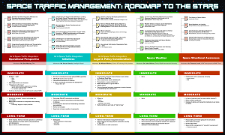Location
Jim Henderson Welcome Center, Embry-Riddle Aeronautical University - Daytona Beach
Start Date
5-11-2014 2:00 PM
Abstract
Sierra Nevada Corporation’s (SNC) Space Systems is developing the Dream Chaser® reusable space vehicle for NASA’s Commercial Crew Program. The Dream Chaser is a lifting body vehicle that lands on a runway similar to the Space Shuttle. Unlike the Shuttle, the Dream Chaser does not require any unique landing aids or specialized equipment as it uses all non-toxic propellants and industry standard subsystems. This allows for immediate access to crew and cargo at wheels-stop. Requiring only 8,000 ft/2,400 m of runway for landing, the Dream Chaser is compatible with numerous public runways. There are, however, unique and complex challenges associated with landing a commercial reusable spacecraft on a public-use runway.
In order to identify and address these issues, SNC has selected the planned Spaceport at Ellington Airport in Houston for its initial landing study. SNC’s team includes the Houston Airport System, RS&H, the Federal Aviation Administration (FAA) and several related organizations. Initial work has outlined the driving issues associated with integrating the Dream Chaser vehicle into existing public airways and airports, as well as the team’s plan forward; key examples are as follows:
Dream Chaser Approach-and-Landing Considerations:
- Shuttle-like re-entry profile
- Runway requirements
- Landing gear consideration
- Post landing procedures and timeline
Issues Requiring Forward Work:
- Risk management, safety, policy overview
- Trajectory shaping to manage and abate sonic booms
- Air Traffic Control (ATC) integration for crewed and uncrewed vehicles
- Ground operations at a public-use airport
- National Airspace considerations for procedure and equipment requirements
Area of Interest
NAS Integration
Challenges and Opportunities Related to Landing the Dream Chaser® Commercial Reusable Space Vehicle at a Public-Use Airport
Jim Henderson Welcome Center, Embry-Riddle Aeronautical University - Daytona Beach
Sierra Nevada Corporation’s (SNC) Space Systems is developing the Dream Chaser® reusable space vehicle for NASA’s Commercial Crew Program. The Dream Chaser is a lifting body vehicle that lands on a runway similar to the Space Shuttle. Unlike the Shuttle, the Dream Chaser does not require any unique landing aids or specialized equipment as it uses all non-toxic propellants and industry standard subsystems. This allows for immediate access to crew and cargo at wheels-stop. Requiring only 8,000 ft/2,400 m of runway for landing, the Dream Chaser is compatible with numerous public runways. There are, however, unique and complex challenges associated with landing a commercial reusable spacecraft on a public-use runway.
In order to identify and address these issues, SNC has selected the planned Spaceport at Ellington Airport in Houston for its initial landing study. SNC’s team includes the Houston Airport System, RS&H, the Federal Aviation Administration (FAA) and several related organizations. Initial work has outlined the driving issues associated with integrating the Dream Chaser vehicle into existing public airways and airports, as well as the team’s plan forward; key examples are as follows:
Dream Chaser Approach-and-Landing Considerations:
- Shuttle-like re-entry profile
- Runway requirements
- Landing gear consideration
- Post landing procedures and timeline
Issues Requiring Forward Work:
- Risk management, safety, policy overview
- Trajectory shaping to manage and abate sonic booms
- Air Traffic Control (ATC) integration for crewed and uncrewed vehicles
- Ground operations at a public-use airport
- National Airspace considerations for procedure and equipment requirements


Comments
Click here for Christopher Allison’s Bio Page
Click here for Brian Gulliver’s Bio Page